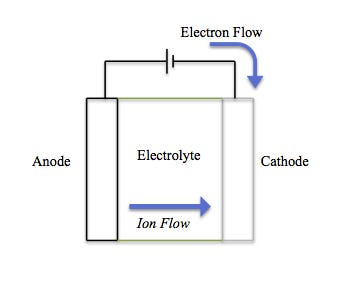Aluminium-Ion Battery
Profile: A type of rechargeable battery that uses aluminium ions to carry the charge. When being used, the aluminium ions move from the anode to the cathode and this releases energy to power devices. When being recharged, the ions move back to the anode.
Anode: Aluminium
Cathode: Other materials, such as sulfur in aluminium-sulfur batteries or graphite in aluminium-graphene batteries. Other potential options include vanadium oxides or manganese dioxide.
Electrolyte: Aluminium Chloride (AlC3), other ionic liquids.
Charging Speed: Aluminium-ion batteries charge 60 times faster than lithium-ion batteries.
Performance: Theoretical voltage of 2.65V vs 4V for a lithium-ion battery.
Scarce Resources Used?: Graphene, Sulphur

Where To Access These Scarce Resources:
Graphite Exports (2021) (China - 47.82%, United States - 8.69%, Madagascar - 7.11%)
Graphite Production (2018) (China - 630,000Mt, Brazil - 95,000Mt, Canada - 40,000Mt)
Graphite Annual Usage (2021) - 3,500,000 Tonnes
Sulphur (Crude) Exports (2021) (UAE - 16.03%, Qatar - 13.69%, Kazakhstan - 10.25%)
Sulphur Annual Usage - 68,000,000 Tonnes.
Note: Sulphur is also used to produce chemical fertilisers for agriculture and is a byproduct of oil and gas production.

Energy Storage Capabilities: Aluminium can exchange three electrons per ion which increases energy storage and efficiency in an aluminium-ion battery vs lithium-ion.
Positive Features: Low cost, aluminium is abundant, high energy density vs lithium-ion batteries.
Negative Features: Relatively short shelf life, ionic electrolytes are expensive, even though they are safer and reduce corrosion. This leads to a lower likelihood of dendrites. A dendrite is a projection of metal that in lithium-ion batteries builds up until the anode and cathode are connected. This shorts out the battery.
Chances of Scalability: If the short shelf life, expensive ionic electrolytes, and scarce cathode elements can be addressed, sourced, and produced for cheaper, the higher energy storage capabilities and reduced charge time for aluminium-ion batteries would be an improvement on lithium-ion batteries. These issues are big, however, and won’t be solved overnight. With trade wars occurring in geopolitics in this period of rising tensions, China is holding the cards when it comes to graphite. It recently sought to reduce exports of all exports requiring government approval. Hence, it could be tough to access for every state in the world. If you want graphite for your battery cathodes, start digging in your own country.

Recent Research On Aluminium-Ion Batteries:


